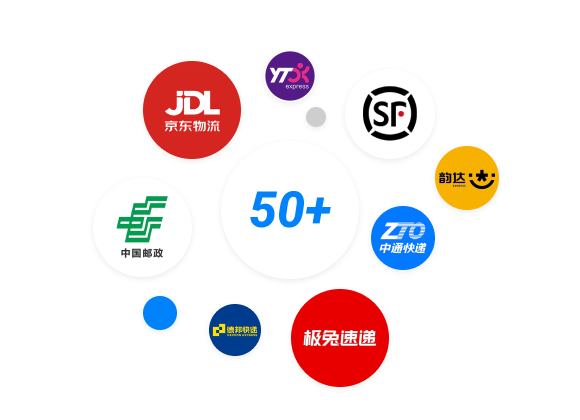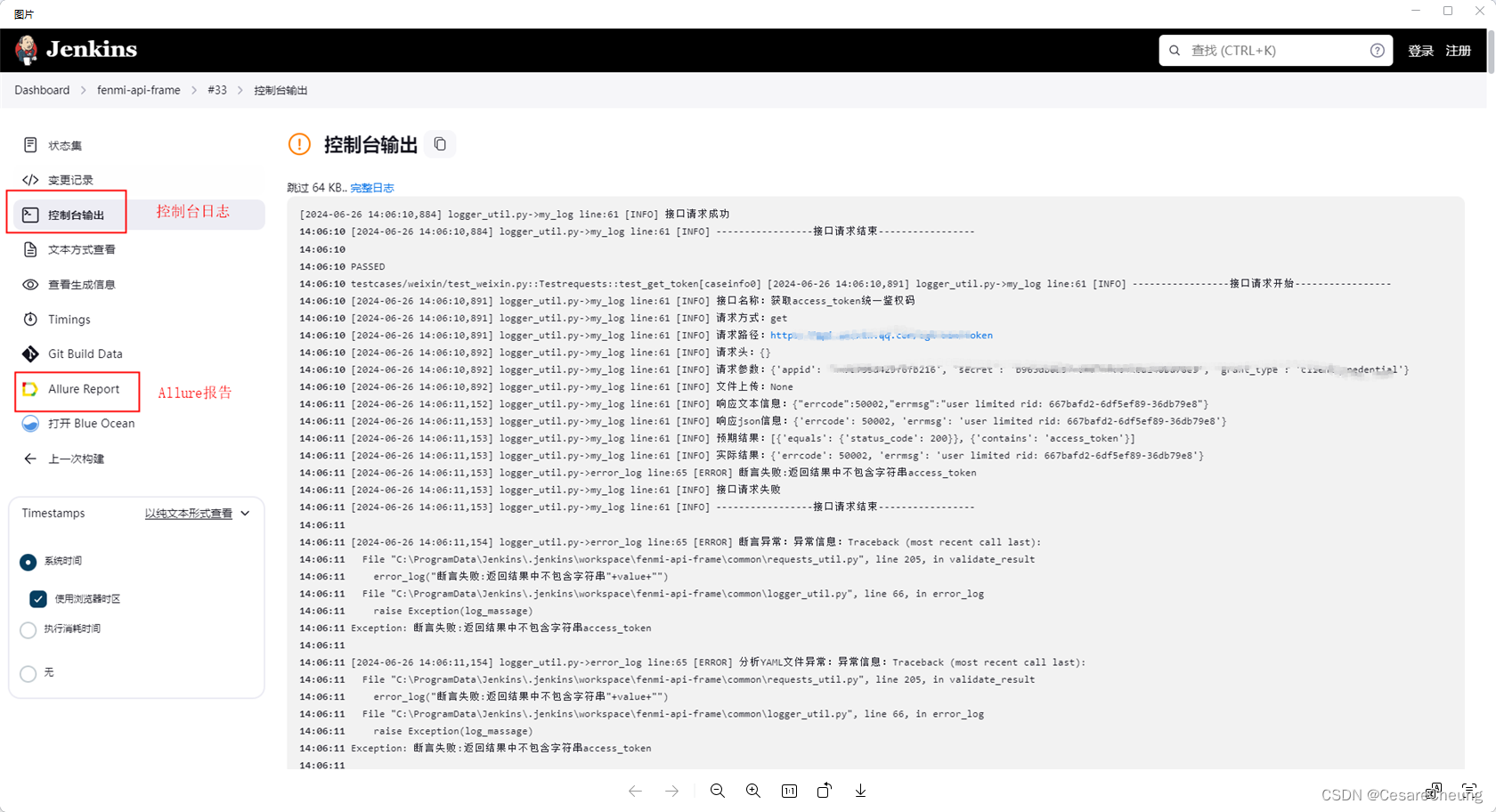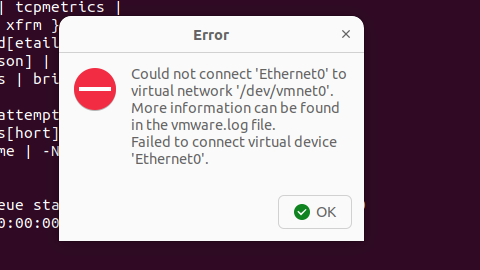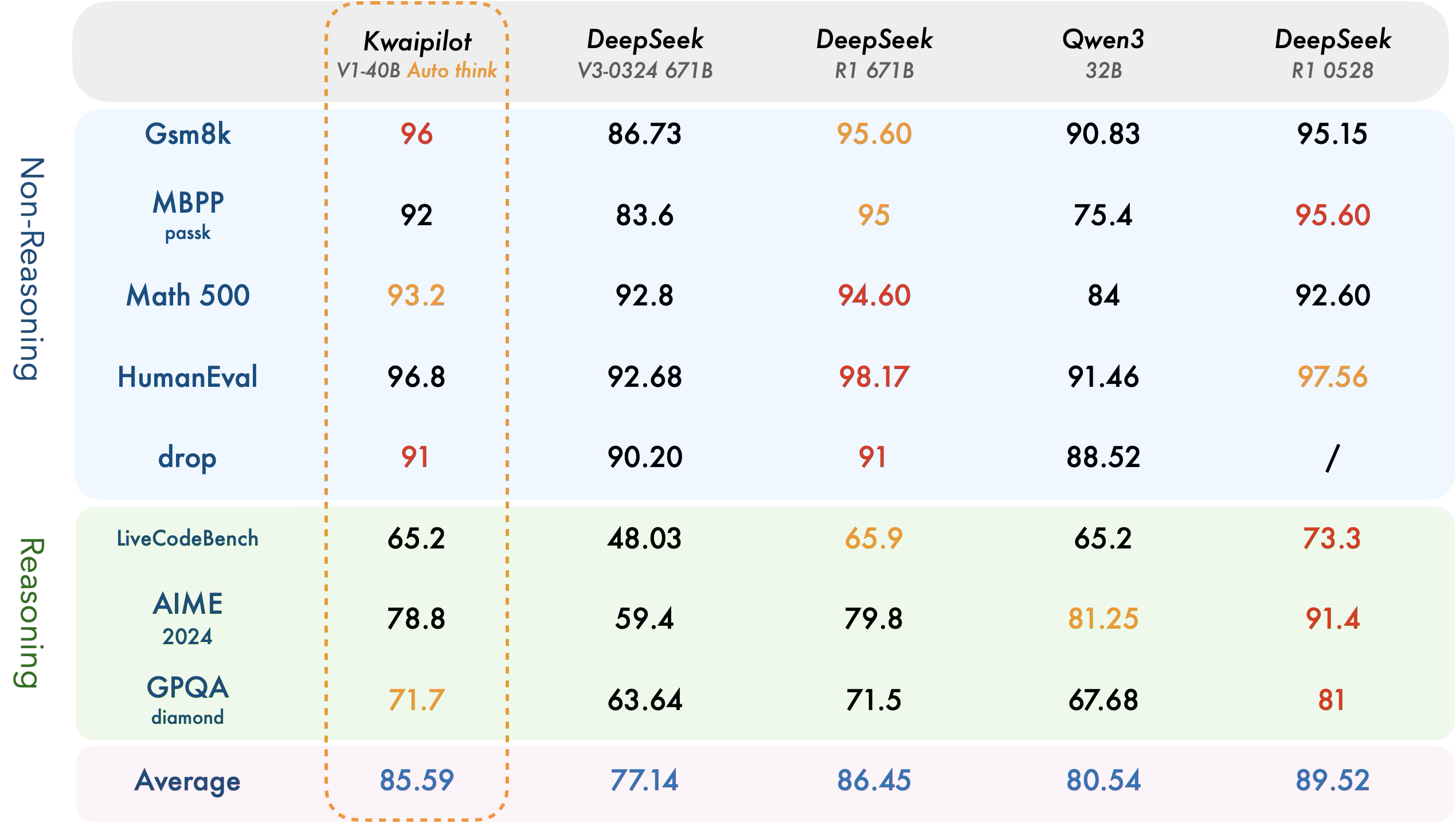mindspore打卡第9天 transformer的encoder和decoder部分
mindspore打卡第9天 transformer的encoder和decoder部分
import mindspore
from mindspore import nn
from mindspore import ops
from mindspore import Tensor
from mindspore import dtype as mstypeclass ScaledDotProductAttention(nn.Cell):def __init__(self, dropout_p=0.):super().__init__()self.softmax = nn.Softmax()self.dropout = nn.Dropout(1-dropout_p)self.sqrt = ops.Sqrt()def construct(self, query, key, value, attn_mask=None):"""scaled dot product attention"""# 计算scaling factorembed_size = query.shape[-1]scaling_factor = self.sqrt(Tensor(embed_size, mstype.float32))# 注意力权重计算# 计算query和key之间的点积,并除以scaling factor进行归一化attn = ops.matmul(query, key.swapaxes(-2, -1) / scaling_factor)# 注意力掩码机制if attn_mask is not None:attn = attn.masked_fill(attn_mask, -1e9)# softmax,保证注意力权重范围在0-1之间attn = self.softmax(attn)# dropoutattn = self.dropout(attn)# 对value进行加权output = ops.matmul(attn, value) ## QK Vreturn (output, attn)
def get_attn_pad_mask(seq_q, seq_k, pad_idx):"""注意力掩码:识别序列中的<pad>占位符Args:seq_q (Tensor): query序列,shape = [batch size, query len]seq_k (Tensor): key序列,shape = [batch size, key len]pad_idx (Tensor): key序列<pad>占位符对应的数字索引"""batch_size, len_q = seq_q.shapebatch_size, len_k = seq_k.shape# 如果序列中元素对应<pad>占位符,则该位置在mask中对应元素为True# pad_attn_mask: [batch size, key len]pad_attn_mask = ops.equal(seq_k, pad_idx)# 增加额外的维度# pad_attn_mask: [batch size, 1, key len]pad_attn_mask = pad_attn_mask.expand_dims(1)# 将掩码广播到[batch size, query len, key len]pad_attn_mask = ops.broadcast_to(pad_attn_mask, (batch_size, len_q, len_k))return pad_attn_mask
q = k = Tensor([[1, 1, 0, 0]], mstype.float32)
pad_idx = 0
mask = get_attn_pad_mask(q, k, pad_idx)
print(mask)
print(q.shape, mask.shape)
[[[False False True True][False False True True][False False True True][False False True True]]]
(1, 4) (1, 4, 4)
自注意力分数的计算还是遵循着上述的公式,只不过这里的query, key和value都变成了句子本身。
给定序列 X ∈ R n × d m o d e l X \in \mathbb{R}^{n \times d_{model}} X∈Rn×dmodel,序列长度为 n n n,维度为 d m o d e l d_{model} dmodel。在计算自注意力时, Q = K = V = X Q = K = V = X Q=K=V=X
Attention ( Q , K , V ) = softmax ( Q K T d m o d e l ) V = softmax ( X X T d m o d e l ) X \text{Attention}(Q, K, V) = \text{softmax}\left(\frac{QK^T}{\sqrt{d_{model}}}\right)V = \text{softmax}\left(\frac{XX^T}{\sqrt{d_{model}}}\right)X Attention(Q,K,V)=softmax(dmodelQKT)V=softmax(dmodelXXT)X
其中,序列中位置为 i i i的词与位置为 j j j的词之间的自注意力分数为:
Attention ( Q , K , V ) i , j = exp ( Q i K j T d m o d e l ) ∑ k = 1 n exp ( Q i K k T d m o d e l ) V j \text{Attention}(Q, K, V)_{i,j} = \frac{\text{exp}\left(\frac{Q_iK_j^T}{\sqrt{d_{model}}}\right)}{\sum_{k=1}^{n}\text{exp}\left(\frac{Q_iK_k^T}{\sqrt{d_{model}}}\right)}V_j Attention(Q,K,V)i,j=∑k=1nexp(dmodelQiKkT)exp(dmodelQiKjT)Vj
多头注意力(Multi-Head Attention)

图片来源:Ashish Vaswani, Noam Shazeer, Niki Parmar, Jakob Uszkoreit, Llion Jones, Aidan N. Gomez, Lukasz Kaiser, and Illia Polosukhin. Attention is all you need, 2017.
多头注意力是注意力机制的扩展,它可以使模型通过不同的方式关注输入序列的不同部分,从而提升模型的训练效果。
不同于之前一次计算整体输入的注意力分数,多头注意力是多次计算,每次计算输入序列中某一部分的注意力分数,最后再将结果进行整合。
多头注意力通过对输入的embedding乘以不同的权重参数 W Q W^{Q} WQ、 W K W^{K} WK和 W V W^{V} WV,将其映射到多个小维度空间中,我们称之为“头”(head),每个头部会并行计算自己的自注意力分数。
head i = Attention ( Q W i Q , K W i K , V W i V ) = softmax ( Q i K i T d k ) V i \text{head}_i = \text{Attention}(QW^Q_i, KW^K_i, VW^V_i) = \text{softmax}\left(\frac{Q_iK_i^T}{\sqrt{d_{k}}}\right)V_i headi=Attention(QWiQ,KWiK,VWiV)=softmax(dkQiKiT)Vi
W i Q ∈ R d m o d e l × d k W^Q_i \in \mathbb{R}^{d_{model}\times d_{k}} WiQ∈Rdmodel×dk、 W i K ∈ R d m o d e l × d k W^K_i \in \mathbb{R}^{d_{model}\times d_{k}} WiK∈Rdmodel×dk和 W i V ∈ R d m o d e l × d v W^V_i \in \mathbb{R}^{d_{model}\times d_{v}} WiV∈Rdmodel×dv为可学习的权重参数。一般为了平衡计算成本,我们会取 d k = d v = d m o d e l / n h e a d d_k = d_v = d_{model} / n_{head} dk=dv=dmodel/nhead。
在获得多组自注意力分数后,我们将结果拼接到一起,得到多头注意力的最终输出。 W O W^O WO为可学习的权重参数,用于将拼接后的多头注意力输出映射回原来的维度。
MultiHead ( Q , K , V ) = Concat ( head 1 , . . . , head h ) W O \text{MultiHead}(Q, K, V)=\text{Concat}(\text{head}_1, ..., \text{head}_h)W^O MultiHead(Q,K,V)=Concat(head1,...,headh)WO
简单来说,在多头注意力中,每个头部可以’解读’输入内容的不同方面,比如:捕捉全局依赖关系、关注特定语境下的词元、识别词和词之间的语法关系等。
class MultiHeadAttention(nn.Cell):def __init__(self, d_model, d_k, n_heads, dropout_p=0.):super().__init__()self.n_heads = n_headsself.d_k = d_kself.W_Q = nn.Dense(d_model, d_k * n_heads)self.W_K = nn.Dense(d_model, d_k * n_heads)self.W_V = nn.Dense(d_model, d_k * n_heads)self.W_O = nn.Dense(n_heads * d_k, d_model)self.attention = ScaledDotProductAttention(dropout_p=dropout_p)def construct(self, query, key, value, attn_mask):"""query: [batch_size, len_q, d_model]key: [batch_size, len_k, d_model]value: [batch_size, len_k, d_model]attn_mask: [batch_size, seq_len, seq_len]"""batch_size = query.shape[0]# 将query,key和value分别乘以对应的权重,并分割为不同的“头”# q_s: [batch_size, len_q, n_heads, d_k]# k_s: [batch_size, len_k, n_heads, d_k]# v_s: [batch_size, len_k, n_heads, d_k]q_s = self.W_Q(query).view(batch_size, -1, self.n_heads, self.d_k)k_s = self.W_K(key).view(batch_size, -1, self.n_heads, self.d_k)v_s = self.W_V(value).view(batch_size, -1, self.n_heads, self.d_k)# 调整query,key和value的维度# q_s: [batch_size, n_heads, len_q, d_k]# k_s: [batch_size, n_heads, len_k, d_k]# v_s: [batch_size, n_heads, len_k, d_k]q_s = q_s.transpose((0, 2, 1, 3)) ###变成 bz head dmodel dkk_s = k_s.transpose((0, 2, 1, 3))v_s = v_s.transpose((0, 2, 1, 3))# attn_mask的dimension需与q_s, k_s, v_s对应# attn_mask: [batch_size, n_heads, seq_len, seq_len]attn_mask = attn_mask.expand_dims(1)attn_mask = ops.tile(attn_mask, (1, self.n_heads, 1, 1))# 计算每个头的注意力分数# context: [batch_size, n_heads, len_q, d_k]# attn: [batch_size, n_heads, len_q, len_k]context, attn = self.attention(q_s, k_s, v_s, attn_mask)# concatenate# context: [batch_size, len_q, n_heads * d_k]context = context.transpose((0, 2, 1, 3)).view((batch_size, -1, self.n_heads * self.d_k))# 乘以W_O# output: [batch_size, len_q, n_heads * d_k]output = self.W_O(context)return output, attn
dmodel, dk, nheads = 10, 2, 5
q = k = v = ops.ones((1, 2, 10), mstype.float32) ##2单词 10长度
attn_mask = Tensor([False]).broadcast_to((1, 2, 2))
multi_head_attn = MultiHeadAttention(dmodel, dk, nheads)
output, attn = multi_head_attn(q, k, v, attn_mask)
print(output.shape, attn.shape)
[WARNING] ME(6511:281472949233968,MainProcess):2024-06-29-07:47:27.910.248 [mindspore/nn/layer/basic.py:173] For Dropout, this parameter `keep_prob` will be deprecated, please use `p` instead.(1, 2, 10) (1, 5, 2, 2)
attn_mask
Tensor(shape=[1, 2, 2], dtype=Bool, value=
[[[False, False],[False, False]]])
attn_mask1 = attn_mask.expand_dims(1)
attn_mask1
Tensor(shape=[1, 1, 2, 2], dtype=Bool, value=
[[[[False, False],[False, False]]]])
attn_mask2 = ops.tile(attn_mask1, (1, 5, 1, 1))
attn_mask2
Tensor(shape=[1, 5, 2, 2], dtype=Bool, value=
[[[[False, False],[False, False]],[[False, False],[False, False]],[[False, False],[False, False]],[[False, False],[False, False]],[[False, False],[False, False]]]])
#context, attn = self.attention(q_s, k_s, v_s, attn_mask) ##可能是根据某种规则计算了 10长度的某些 掩码的位置
from mindspore import numpy as mnpclass PositionalEncoding(nn.Cell):"""位置编码"""def __init__(self, d_model, dropout_p=0.1, max_len=100):super().__init__()self.dropout = nn.Dropout(1 - dropout_p)# 位置信息# pe: [max_len, d_model]self.pe = ops.Zeros()((max_len, d_model), mstype.float32)# pos: [max_len, 1]# angle: [d_model/2, ]# pos/angle: [max len, d_model/2]pos = mnp.arange(0, max_len, dtype=mstype.float32).view((-1, 1))angle = ops.pow(10000.0, mnp.arange(0, d_model, 2, dtype=mstype.float32)/d_model)# pe: [max len, d_model]self.pe[:, 0::2] = ops.sin(pos/angle)self.pe[:, 1::2] = ops.cos(pos/angle)def construct(self, x):batch_size = x.shape[0]# broadcast# pe: [batch_size, max_len, d_model]pe = self.pe.expand_dims(0)pe = ops.broadcast_to(pe, (batch_size, -1, -1))# 将位置编码截取至x同等大小# x: [batch_size, seq_len, d_model]x = x + pe[:, :x.shape[1], :]return self.dropout(x)
x = ops.Zeros()((1, 2, 4), mstype.float32)
pe = PositionalEncoding(4)
print(pe(x))
[WARNING] ME(6511:281472949233968,MainProcess):2024-06-29-07:53:48.481.316 [mindspore/nn/layer/basic.py:173] For Dropout, this parameter `keep_prob` will be deprecated, please use `p` instead.[[[0. 1. 0. 1. ][0.84147096 0.5403023 0.00999983 0.99995 ]]]
编码器(Encoder)
Transformer的Encoder负责处理输入的源序列,并将输入信息整合为一系列的上下文向量(context vector)输出。
每个encoder层中存在两个子层:多头自注意力(multi-head self-attention)和基于位置的前馈神经网络(position-wise feed-forward network)。
子层之间使用了残差连接(residual connection),并使用了层规范化(layer normalization)。二者统称为“Add & Norm”

基于位置的前馈神经网络 (Position-Wise Feed-Forward Network)
基于位置的前馈神经网络被用来对输入中的每个位置进行非线性变换。它由两个线性层组成,层与层之间需要经过ReLU激活函数。
F F N ( x ) = R e L U ( x W 1 + b 1 ) W 2 + b 2 \mathrm{FFN}(x) = \mathrm{ReLU}(xW_1 + b_1)W_2 + b_2 FFN(x)=ReLU(xW1+b1)W2+b2
相比固定的ReLU函数,基于位置的前馈神经网络可以处理更加复杂的关系,并且由于前馈网络是基于位置的,可以捕获到不同位置的信息,并为每个位置提供不同的转换。
class PoswiseFeedForward(nn.Cell):def __init__(self, d_ff, d_model, dropout_p=0.):super().__init__()self.linear1 = nn.Dense(d_model, d_ff)self.linear2 = nn.Dense(d_ff, d_model)self.dropout = nn.Dropout(1-dropout_p)self.relu = nn.ReLU()def construct(self, x):"""前馈神经网络x: [batch_size, seq_len, d_model]"""# x: [batch_size, seq_len, d_ff]x = self.linear1(x)x = self.relu(x)x = self.dropout(x)# x: [batch_size, seq_len, d_model]output = self.linear2(x)return output
x = ops.ones((1, 2, 4), mstype.float32)
ffn = PoswiseFeedForward(16, 4)
print(ffn(x).shape)
[WARNING] ME(6511:281472949233968,MainProcess):2024-06-29-07:55:56.758.194 [mindspore/nn/layer/basic.py:173] For Dropout, this parameter `keep_prob` will be deprecated, please use `p` instead.(1, 2, 4)
Add & Norm
Add & Norm层本质上是残差连接后紧接了一个LayerNorm层。
Add&Norm ( x ) = LayerNorm ( x + Sublayer ( x ) ) \text{Add\&Norm}(x) = \text{LayerNorm}(x + \text{Sublayer}(x)) Add&Norm(x)=LayerNorm(x+Sublayer(x))
- Add:残差连接,帮助缓解网络退化问题,注意需要满足 x x x与 SubLayer ( x ) 的形状一致 \text{SubLayer}(x)的形状一致 SubLayer(x)的形状一致;
- Norm:Layer Norm,层归一化,帮助模型更快地进行收敛;
class AddNorm(nn.Cell):def __init__(self, d_model, dropout_p=0.):super().__init__()self.layer_norm = nn.LayerNorm((d_model, ), epsilon=1e-5)self.dropout = nn.Dropout(1-dropout_p)def construct(self, x, residual):return self.layer_norm(self.dropout(x) + residual)
x = ops.ones((1, 2, 4), mstype.float32)
residual = ops.ones((1, 2, 4), mstype.float32)
add_norm = AddNorm(4)
print(add_norm(x, residual).shape)
[WARNING] ME(6511:281472949233968,MainProcess):2024-06-29-07:56:31.658.630 [mindspore/nn/layer/basic.py:173] For Dropout, this parameter `keep_prob` will be deprecated, please use `p` instead.(1, 2, 4)
EncoderLayer
我们首先实现encoder中的一个层。
class EncoderLayer(nn.Cell):def __init__(self, d_model, n_heads, d_ff, dropout_p=0.):super().__init__()d_k = d_model // n_headsif d_k * n_heads != d_model:raise ValueError(f"The `d_model` {d_model} can not be divisible by `num_heads` {n_heads}.")self.enc_self_attn = MultiHeadAttention(d_model, d_k, n_heads, dropout_p)self.pos_ffn = PoswiseFeedForward(d_ff, d_model, dropout_p)self.add_norm1 = AddNorm(d_model, dropout_p)self.add_norm2 = AddNorm(d_model, dropout_p)def construct(self, enc_inputs, enc_self_attn_mask):"""enc_inputs: [batch_size, src_len, d_model]enc_self_attn_mask: [batch_size, src_len, src_len]"""residual = enc_inputs# multi-head attentionenc_outputs, attn = self.enc_self_attn(enc_inputs, enc_inputs, enc_inputs, enc_self_attn_mask)# add & normenc_outputs = self.add_norm1(enc_outputs, residual)residual = enc_outputs# feed-forwardenc_outputs = self.pos_ffn(enc_outputs)# add & normenc_outputs = self.add_norm2(enc_outputs, residual)return enc_outputs, attn
x = ops.ones((1, 2, 8), mstype.float32)
mask = Tensor([False]).broadcast_to((1, 2, 2))
encoder_layer = EncoderLayer(8, 4, 16)
output, attn = encoder_layer(x, mask)
print(output.shape, attn.shape)
[WARNING] ME(6511:281472949233968,MainProcess):2024-06-29-07:59:57.449.30 [mindspore/nn/layer/basic.py:173] For Dropout, this parameter `keep_prob` will be deprecated, please use `p` instead.
[WARNING] ME(6511:281472949233968,MainProcess):2024-06-29-07:59:57.520.09 [mindspore/nn/layer/basic.py:173] For Dropout, this parameter `keep_prob` will be deprecated, please use `p` instead.
[WARNING] ME(6511:281472949233968,MainProcess):2024-06-29-07:59:57.559.25 [mindspore/nn/layer/basic.py:173] For Dropout, this parameter `keep_prob` will be deprecated, please use `p` instead.
[WARNING] ME(6511:281472949233968,MainProcess):2024-06-29-07:59:57.595.56 [mindspore/nn/layer/basic.py:173] For Dropout, this parameter `keep_prob` will be deprecated, please use `p` instead.(1, 2, 8) (1, 4, 2, 2)
Encoder
将上面实现的encoder层堆叠n_layers次,并添加wording embedding与positional encoding。
class Encoder(nn.Cell):def __init__(self, src_vocab_size, d_model, n_heads, d_ff, n_layers, dropout_p=0.):super().__init__()self.src_emb = nn.Embedding(src_vocab_size, d_model)self.pos_emb = PositionalEncoding(d_model, dropout_p)self.layers = nn.CellList([EncoderLayer(d_model, n_heads, d_ff, dropout_p) for _ in range(n_layers)])self.scaling_factor = ops.Sqrt()(Tensor(d_model, mstype.float32))def construct(self, enc_inputs, src_pad_idx):"""enc_inputs : [batch_size, src_len]"""# 将输入转换为embedding,并添加位置信息# enc_outputs: [batch_size, src_len, d_model]enc_outputs = self.src_emb(enc_inputs.astype(mstype.int32))enc_outputs = self.pos_emb(enc_outputs * self.scaling_factor)# 输入的padding掩码# enc_self_attn_mask: [batch_size, src_len, src_len]enc_self_attn_mask = get_attn_pad_mask(enc_inputs, enc_inputs, src_pad_idx)# 堆叠encoder层# enc_outputs: [batch_size, src_len, d_model]# enc_self_attns: [batch_size, n_heads, src_len, src_len]enc_self_attns = []for layer in self.layers:enc_outputs, enc_self_attn = layer(enc_outputs, enc_self_attn_mask)enc_self_attns.append(enc_self_attn)return enc_outputs, enc_self_attns
解码器 (Decoder)

解码器将编码器输出的上下文序列转换为目标序列的预测结果 Y ^ \hat{Y} Y^,该输出将在模型训练中与真实目标输出 Y Y Y进行比较,计算损失。
不同于编码器,每个Decoder层中包含两层多头注意力机制,并在最后多出一个线性层,输出对目标序列的预测结果。
- 第一层:计算目标序列的注意力分数的掩码多头自注意力;
- 第二层:用于计算上下文序列与目标序列对应关系,其中Decoder掩码多头注意力的输出作为query,Encoder的输出(上下文序列)作为key和value;
带掩码的多头注意力
在处理目标序列的输入时,t时刻的模型只能“观察”直到t-1时刻的所有词元,后续的词语不应该一并输入Decoder中。
为了保证在t时刻,只有t-1个词元作为输入参与多头注意力分数的计算,我们需要在第一个多头注意力中额外增加一个时间掩码,使目标序列中的词随时间发展逐个被暴露出来。
该注意力掩码可通过三角矩阵实现,对角线以上的词元表示为不参与注意力计算的词元,标记为1。
0 1 1 1 1 0 0 1 1 1 0 0 0 1 1 0 0 0 0 1 0 0 0 0 0 \begin{matrix} 0 & 1 & 1 & 1 & 1\\ 0 & 0 & 1 & 1 & 1\\ 0 & 0 & 0 & 1 & 1\\ 0 & 0 & 0 & 0 & 1\\ 0 & 0 & 0 & 0 & 0\\ \end{matrix} 0000010000110001110011110
该掩码一般被称作subsequent mask。
最后,将subsequent mask和padding mask合并为一个整体的掩码,确保模型既不会注意到t时刻以后的词元,也不会关注为<pad>的词元。

def get_attn_subsequent_mask(seq_q, seq_k):"""生成时间掩码,使decoder在第t时刻只能看到序列的前t-1个元素Args:seq_q (Tensor): query序列,shape = [batch size, len_q]seq_k (Tensor): key序列,shape = [batch size, len_k]"""batch_size, len_q = seq_q.shapebatch_size, len_k = seq_k.shape# 生成三角矩阵# subsequent_mask: [batch size, len_q, len_k]ones = ops.ones((batch_size, len_q, len_k), mindspore.float32)subsequent_mask = mnp.triu(ones, k=1)return subsequent_mask
q = k = ops.ones((1, 4), mstype.float32) ##因为 batch_size, len_q = seq_q.shape 其实修改为 1 4 4 也可以
mask = get_attn_subsequent_mask(q, k)
print(mask)
[[[0. 1. 1. 1.][0. 0. 1. 1.][0. 0. 0. 1.][0. 0. 0. 0.]]]
Decoder Layer
首先实现Decoder中的一个层。
class DecoderLayer(nn.Cell):def __init__(self, d_model, n_heads, d_ff, dropout_p=0.):super().__init__()d_k = d_model // n_headsif d_k * n_heads != d_model:raise ValueError(f"The `d_model` {d_model} can not be divisible by `num_heads` {n_heads}.")self.dec_self_attn = MultiHeadAttention(d_model, d_k, n_heads, dropout_p)self.dec_enc_attn = MultiHeadAttention(d_model, d_k, n_heads, dropout_p)self.pos_ffn = PoswiseFeedForward(d_ff, d_model, dropout_p)self.add_norm1 = AddNorm(d_model, dropout_p)self.add_norm2 = AddNorm(d_model, dropout_p)self.add_norm3 = AddNorm(d_model, dropout_p)def construct(self, dec_inputs, enc_outputs, dec_self_attn_mask, dec_enc_attn_mask):"""dec_inputs: [batch_size, trg_len, d_model]enc_outputs: [batch_size, src_len, d_model]dec_self_attn_mask: [batch_size, trg_len, trg_len]dec_enc_attn_mask: [batch_size, trg_len, src_len]"""residual = dec_inputs# decoder multi-head attentiondec_outputs, dec_self_attn = self.dec_self_attn(dec_inputs, dec_inputs, dec_inputs, dec_self_attn_mask)# add & normdec_outputs = self.add_norm1(dec_outputs, residual)residual = dec_outputs# encoder-decoder multi-head attention dec_outputs, dec_enc_attn = self.dec_enc_attn(dec_outputs, enc_outputs, enc_outputs, dec_enc_attn_mask)## dec_outputs作为Q enc作为KV# add & normdec_outputs = self.add_norm2(dec_outputs, residual)residual = dec_outputs# feed-forwarddec_outputs = self.pos_ffn(dec_outputs)# add & normdec_outputs = self.add_norm3(dec_outputs, residual)return dec_outputs, dec_self_attn, dec_enc_attn
x = y = ops.ones((1, 2, 4), mstype.float32)
mask1 = mask2 = Tensor([False]).broadcast_to((1, 2, 2))
decoder_layer = DecoderLayer(4, 1, 16) ## d_model, n_heads, d_ff,
output, attn1, attn2 = decoder_layer(x, y, mask1, mask2)
print(output.shape, attn1.shape, attn2.shape)
[WARNING] ME(6511:281472949233968,MainProcess):2024-06-29-08:13:42.292.865 [mindspore/nn/layer/basic.py:173] For Dropout, this parameter `keep_prob` will be deprecated, please use `p` instead.
[WARNING] ME(6511:281472949233968,MainProcess):2024-06-29-08:13:42.304.560 [mindspore/nn/layer/basic.py:173] For Dropout, this parameter `keep_prob` will be deprecated, please use `p` instead.
[WARNING] ME(6511:281472949233968,MainProcess):2024-06-29-08:13:42.311.160 [mindspore/nn/layer/basic.py:173] For Dropout, this parameter `keep_prob` will be deprecated, please use `p` instead.
[WARNING] ME(6511:281472949233968,MainProcess):2024-06-29-08:13:42.315.077 [mindspore/nn/layer/basic.py:173] For Dropout, this parameter `keep_prob` will be deprecated, please use `p` instead.
[WARNING] ME(6511:281472949233968,MainProcess):2024-06-29-08:13:42.318.475 [mindspore/nn/layer/basic.py:173] For Dropout, this parameter `keep_prob` will be deprecated, please use `p` instead.
[WARNING] ME(6511:281472949233968,MainProcess):2024-06-29-08:13:42.321.795 [mindspore/nn/layer/basic.py:173] For Dropout, this parameter `keep_prob` will be deprecated, please use `p` instead.(1, 2, 4) (1, 1, 2, 2) (1, 1, 2, 2)
Decoder
将上面实现的DecoderLayer堆叠n_layer次,添加word embedding与positional encoding,以及最后的线性层。
输出的dec_outputs为对目标序列的预测。
class Decoder(nn.Cell):def __init__(self, trg_vocab_size, d_model, n_heads, d_ff, n_layers, dropout_p=0.):super().__init__()self.trg_emb = nn.Embedding(trg_vocab_size, d_model)self.pos_emb = PositionalEncoding(d_model, dropout_p)self.layers = nn.CellList([DecoderLayer(d_model, n_heads, d_ff) for _ in range(n_layers)])self.projection = nn.Dense(d_model, trg_vocab_size)self.scaling_factor = ops.Sqrt()(Tensor(d_model, mstype.float32)) def construct(self, dec_inputs, enc_inputs, enc_outputs, src_pad_idx, trg_pad_idx):"""dec_inputs: [batch_size, trg_len]enc_inputs: [batch_size, src_len]enc_outputs: [batch_size, src_len, d_model]"""# 将输入转换为Embedding,并添加位置信息# dec_outputs: [batch_size, trg_len, d_model]dec_outputs = self.trg_emb(dec_inputs.astype(mstype.int32))dec_outputs = self.pos_emb(dec_outputs * self.scaling_factor)# decoder中自注意力的掩码# dec_self_attn_mask: [batch_size, trg_len, trg_len]dec_self_attn_pad_mask = get_attn_pad_mask(dec_inputs, dec_inputs, trg_pad_idx)dec_self_attn_subsequent_mask = get_attn_subsequent_mask(dec_inputs, dec_inputs)dec_self_attn_mask = ops.gt((dec_self_attn_pad_mask + dec_self_attn_subsequent_mask), 0)# encoder-decoder中的注意力padding掩码# dec_enc_attn_mask: [batch_size, trg_len, src_len]dec_enc_attn_mask = get_attn_pad_mask(dec_inputs, enc_inputs, src_pad_idx)# 堆叠decoder层# dec_outputs: [batch_size, trg_len, d_model]dec_self_attns, dec_enc_attns = [], []for layer in self.layers:dec_outputs, dec_self_attn, dec_enc_attn = layer(dec_outputs, enc_outputs, dec_self_attn_mask, dec_enc_attn_mask)dec_self_attns.append(dec_self_attn)dec_enc_attns.append(dec_enc_attn)# 线性层# dec_outputs: [batch_size, trg_len, trg_vocab_size]dec_outputs = self.projection(dec_outputs)return dec_outputs, dec_self_attns, dec_enc_attns
Transformer
将实现的Encoder与Decoder组合起来。
class Transformer(nn.Cell):def __init__(self, encoder, decoder):super().__init__()self.encoder = encoderself.decoder = decoderdef construct(self, enc_inputs, dec_inputs, src_pad_idx, trg_pad_idx):"""enc_inputs: [batch_size, src_len]dec_inputs: [batch_size, trg_len]"""# encoder,输出表示源序列信息tensor# enc_ouputs: [batch_size, src_len, d_model]enc_outputs, enc_self_attns = self.encoder(enc_inputs, src_pad_idx)# decoder# de_outputs: [batch_size, trg_len, trg_vocab_size]dec_outputs, dec_self_attns, dec_enc_attns = self.decoder(dec_inputs, enc_inputs, enc_outputs, src_pad_idx, trg_pad_idx)# decoder logits# dec_logits: [batch_size * trg_len, trg_vocab_size]dec_logits = dec_outputs.view((-1, dec_outputs.shape[-1]))return dec_logits, enc_self_attns, dec_self_attns, dec_enc_attns通过Transformer实现文本机器翻译
全流程
- 数据预处理: 将图像、文本等数据处理为可以计算的Tensor
- 模型构建: 使用框架API, 搭建模型
- 模型训练: 定义模型训练逻辑, 遍历训练集进行训练
- 模型评估: 使用训练好的模型, 在测试集评估效果
- 模型推理: 将训练好的模型部署, 输入新数据获得预测结果
数据准备
我们本次使用的数据集为Multi30K数据集,它是一个大规模的图像-文本数据集,包含30K+图片,每张图片对应两类不同的文本描述:
- 英语描述,及对应的德语翻译;
- 五个独立的、非翻译而来的英语和德语描述,描述中包含的细节并不相同;
因其收集的不同语言对于图片的描述相互独立,所以训练出的模型可以更好地适用于有噪声的多模态内容。

在本次文本翻译任务中,德语是源语言(source languag),英语是目标语言(target language)。
数据下载模块
使用download进行数据下载,并将tar.gz文件解压到指定文件夹。
from torchtext.datasets import multi30kmulti30k.URL["train"] = "https://raw.githubusercontent.com/neychev/small_DL_repo/master/datasets/Multi30k/training.tar.gz"
multi30k.URL["valid"] = "https://raw.githubusercontent.com/neychev/small_DL_repo/master/datasets/Multi30k/validation.tar.gz"
multi30k.URL["test"] = "https://raw.githubusercontent.com/neychev/small_DL_repo/master/datasets/Multi30k/mmt16_task1_test.tar.gz"multi30k.MD5["train"] = "20140d013d05dd9a72dfde46478663ba05737ce983f478f960c1123c6671be5e"
multi30k.MD5["valid"] = "a7aa20e9ebd5ba5adce7909498b94410996040857154dab029851af3a866da8c"
multi30k.MD5["test"] = "6d1ca1dba99e2c5dd54cae1226ff11c2551e6ce63527ebb072a1f70f72a5cd36"https://discuss.pytorch.org/
#train_path '/home/nginx/.mindspore_examples/train'
'/home/nginx/.mindspore_examples/train'
!wget -c -t 0 https://raw.githubusercontent.com/neychev/small_DL_repo/master/datasets/Multi30k/training.tar.gz
--2024-06-29 08:52:16-- https://raw.githubusercontent.com/neychev/small_DL_repo/master/datasets/Multi30k/training.tar.gz
Resolving raw.githubusercontent.com (raw.githubusercontent.com)... 185.199.111.133, 185.199.109.133, 185.199.108.133, ...
Connecting to raw.githubusercontent.com (raw.githubusercontent.com)|185.199.111.133|:443... failed: Connection timed out.
Connecting to raw.githubusercontent.com (raw.githubusercontent.com)|185.199.109.133|:443... failed: Connection timed out.
Connecting to raw.githubusercontent.com (raw.githubusercontent.com)|185.199.108.133|:443...
!wget -c -t 0 https://raw.githubusercontent.com/neychev/small_DL_repo/master/datasets/Multi30k/training.tar.gz
!wget -c -t 0 https://raw.githubusercontent.com/neychev/small_DL_repo/master/datasets/Multi30k/validation.tar.gz
!wget -c -t 0https://raw.githubusercontent.com/neychev/small_DL_repo/master/datasets/Multi30k/mmt16_task1_test.tar.gz -O mmt_task1_test2016.tar.gz
from download import download
from pathlib import Path
from tqdm import tqdm
import os# 训练、验证、测试数据集下载地址
urls = {'train': 'https://raw.githubusercontent.com/neychev/small_DL_repo/master/datasets/Multi30k/training.tar.gz','valid': 'https://raw.githubusercontent.com/neychev/small_DL_repo/master/datasets/Multi30k/validation.tar.gz','test': 'https://raw.githubusercontent.com/neychev/small_DL_repo/master/datasets/Multi30k/mmt16_task1_test.tar.gz'
}# 指定保存路径为 `home_path/.mindspore_examples`
cache_dir = Path.home() / '.mindspore_examples'train_path = download(urls['train'], os.path.join(cache_dir, 'train'), kind='tar.gz')
valid_path = download(urls['valid'], os.path.join(cache_dir, 'valid'), kind='tar.gz')
#test_path = download(urls['test'], os.path.join(cache_dir, 'test'), kind='tar.gz')
Replace is False and data exists, so doing nothing. Use replace=True to re-download the data.
Creating data folder...---------------------------------------------------------------------------OSError Traceback (most recent call last)File ~/miniconda/envs/jupyter/lib/python3.9/urllib/request.py:1346, in AbstractHTTPHandler.do_open(self, http_class, req, **http_conn_args)1345 try:
-> 1346 h.request(req.get_method(), req.selector, req.data, headers,1347 encode_chunked=req.has_header('Transfer-encoding'))1348 except OSError as err: # timeout errorFile ~/miniconda/envs/jupyter/lib/python3.9/http/client.py:1285, in HTTPConnection.request(self, method, url, body, headers, encode_chunked)1284 """Send a complete request to the server."""
-> 1285 self._send_request(method, url, body, headers, encode_chunked)File ~/miniconda/envs/jupyter/lib/python3.9/http/client.py:1331, in HTTPConnection._send_request(self, method, url, body, headers, encode_chunked)1330 body = _encode(body, 'body')
-> 1331 self.endheaders(body, encode_chunked=encode_chunked)File ~/miniconda/envs/jupyter/lib/python3.9/http/client.py:1280, in HTTPConnection.endheaders(self, message_body, encode_chunked)1279 raise CannotSendHeader()
-> 1280 self._send_output(message_body, encode_chunked=encode_chunked)File ~/miniconda/envs/jupyter/lib/python3.9/http/client.py:1040, in HTTPConnection._send_output(self, message_body, encode_chunked)1039 del self._buffer[:]
-> 1040 self.send(msg)1042 if message_body is not None:1043 1044 # create a consistent interface to message_bodyFile ~/miniconda/envs/jupyter/lib/python3.9/http/client.py:980, in HTTPConnection.send(self, data)979 if self.auto_open:
--> 980 self.connect()981 else:File ~/miniconda/envs/jupyter/lib/python3.9/http/client.py:1447, in HTTPSConnection.connect(self)1445 "Connect to a host on a given (SSL) port."
-> 1447 super().connect()1449 if self._tunnel_host:File ~/miniconda/envs/jupyter/lib/python3.9/http/client.py:946, in HTTPConnection.connect(self)945 """Connect to the host and port specified in __init__."""
--> 946 self.sock = self._create_connection(947 (self.host,self.port), self.timeout, self.source_address)948 # Might fail in OSs that don't implement TCP_NODELAYFile ~/miniconda/envs/jupyter/lib/python3.9/socket.py:844, in create_connection(address, timeout, source_address)843 try:
--> 844 raise err845 finally:846 # Break explicitly a reference cycleFile ~/miniconda/envs/jupyter/lib/python3.9/socket.py:832, in create_connection(address, timeout, source_address)831 sock.bind(source_address)
--> 832 sock.connect(sa)833 # Break explicitly a reference cycleOSError: [Errno 99] Cannot assign requested addressDuring handling of the above exception, another exception occurred:URLError Traceback (most recent call last)File ~/miniconda/envs/jupyter/lib/python3.9/site-packages/download/download.py:208, in _fetch_file(url, file_name, resume, hash_, timeout, progressbar, verbose)207 req = request_agent(url)
--> 208 u = urllib.request.urlopen(req, timeout=timeout)209 u.close()File ~/miniconda/envs/jupyter/lib/python3.9/urllib/request.py:214, in urlopen(url, data, timeout, cafile, capath, cadefault, context)213 opener = _opener
--> 214 return opener.open(url, data, timeout)File ~/miniconda/envs/jupyter/lib/python3.9/urllib/request.py:517, in OpenerDirector.open(self, fullurl, data, timeout)516 sys.audit('urllib.Request', req.full_url, req.data, req.headers, req.get_method())
--> 517 response = self._open(req, data)519 # post-process responseFile ~/miniconda/envs/jupyter/lib/python3.9/urllib/request.py:534, in OpenerDirector._open(self, req, data)533 protocol = req.type
--> 534 result = self._call_chain(self.handle_open, protocol, protocol +535 '_open', req)536 if result:File ~/miniconda/envs/jupyter/lib/python3.9/urllib/request.py:494, in OpenerDirector._call_chain(self, chain, kind, meth_name, *args)493 func = getattr(handler, meth_name)
--> 494 result = func(*args)495 if result is not None:File ~/miniconda/envs/jupyter/lib/python3.9/urllib/request.py:1389, in HTTPSHandler.https_open(self, req)1388 def https_open(self, req):
-> 1389 return self.do_open(http.client.HTTPSConnection, req,1390 context=self._context, check_hostname=self._check_hostname)File ~/miniconda/envs/jupyter/lib/python3.9/urllib/request.py:1349, in AbstractHTTPHandler.do_open(self, http_class, req, **http_conn_args)1348 except OSError as err: # timeout error
-> 1349 raise URLError(err)1350 r = h.getresponse()URLError: <urlopen error [Errno 99] Cannot assign requested address>During handling of the above exception, another exception occurred:RuntimeError Traceback (most recent call last)Cell In[30], line 1714 cache_dir = Path.home() / '.mindspore_examples'16 train_path = download(urls['train'], os.path.join(cache_dir, 'train'), kind='tar.gz')
---> 17 valid_path = download(urls['valid'], os.path.join(cache_dir, 'valid'), kind='tar.gz')18 test_path = download(urls['test'], os.path.join(cache_dir, 'test'), kind='tar.gz')File ~/miniconda/envs/jupyter/lib/python3.9/site-packages/download/download.py:95, in download(url, path, kind, progressbar, replace, timeout, verbose)93 path_temp = _TempDir()94 path_temp_file = op.join(path_temp, "tmp.{}".format(kind))
---> 95 _fetch_file(96 download_url,97 path_temp_file,98 timeout=timeout,99 verbose=verbose,100 progressbar=progressbar,101 )103 # Unzip the file to the out path104 if verbose:File ~/miniconda/envs/jupyter/lib/python3.9/site-packages/download/download.py:277, in _fetch_file(url, file_name, resume, hash_, timeout, progressbar, verbose)275 shutil.move(temp_file_name, file_name)276 except Exception as ee:
--> 277 raise RuntimeError(278 "Error while fetching file %s."279 " Dataset fetching aborted.\nError: %s" % (url, ee)280 )RuntimeError: Error while fetching file https://raw.githubusercontent.com/neychev/small_DL_repo/master/datasets/Multi30k/validation.tar.gz. Dataset fetching aborted.
Error: <urlopen error [Errno 99] Cannot assign requested address>
test_path
# from download import download
# from pathlib import Path
# from tqdm import tqdm
# import os# # 训练、验证、测试数据集下载地址
# urls = {
# 'train': 'http://www.quest.dcs.shef.ac.uk/wmt16_files_mmt/training.tar.gz',
# 'valid': 'http://www.quest.dcs.shef.ac.uk/wmt16_files_mmt/validation.tar.gz',
# 'test': 'http://www.quest.dcs.shef.ac.uk/wmt17_files_mmt/mmt_task1_test2016.tar.gz'
# }# # 指定保存路径为 `home_path/.mindspore_examples`
# cache_dir = Path.home() / '.mindspore_examples'# train_path = download(urls['train'], os.path.join(cache_dir, 'train'), kind='tar.gz')
# valid_path = download(urls['valid'], os.path.join(cache_dir, 'valid'), kind='tar.gz')
# test_path = download(urls['test'], os.path.join(cache_dir, 'test'), kind='tar.gz')
Creating data folder...---------------------------------------------------------------------------timeout Traceback (most recent call last)File ~/miniconda/envs/jupyter/lib/python3.9/urllib/request.py:1346, in AbstractHTTPHandler.do_open(self, http_class, req, **http_conn_args)1345 try:
-> 1346 h.request(req.get_method(), req.selector, req.data, headers,1347 encode_chunked=req.has_header('Transfer-encoding'))1348 except OSError as err: # timeout errorFile ~/miniconda/envs/jupyter/lib/python3.9/http/client.py:1285, in HTTPConnection.request(self, method, url, body, headers, encode_chunked)1284 """Send a complete request to the server."""
-> 1285 self._send_request(method, url, body, headers, encode_chunked)File ~/miniconda/envs/jupyter/lib/python3.9/http/client.py:1331, in HTTPConnection._send_request(self, method, url, body, headers, encode_chunked)1330 body = _encode(body, 'body')
-> 1331 self.endheaders(body, encode_chunked=encode_chunked)File ~/miniconda/envs/jupyter/lib/python3.9/http/client.py:1280, in HTTPConnection.endheaders(self, message_body, encode_chunked)1279 raise CannotSendHeader()
-> 1280 self._send_output(message_body, encode_chunked=encode_chunked)File ~/miniconda/envs/jupyter/lib/python3.9/http/client.py:1040, in HTTPConnection._send_output(self, message_body, encode_chunked)1039 del self._buffer[:]
-> 1040 self.send(msg)1042 if message_body is not None:1043 1044 # create a consistent interface to message_bodyFile ~/miniconda/envs/jupyter/lib/python3.9/http/client.py:980, in HTTPConnection.send(self, data)979 if self.auto_open:
--> 980 self.connect()981 else:File ~/miniconda/envs/jupyter/lib/python3.9/http/client.py:946, in HTTPConnection.connect(self)945 """Connect to the host and port specified in __init__."""
--> 946 self.sock = self._create_connection(947 (self.host,self.port), self.timeout, self.source_address)948 # Might fail in OSs that don't implement TCP_NODELAYFile ~/miniconda/envs/jupyter/lib/python3.9/socket.py:844, in create_connection(address, timeout, source_address)843 try:
--> 844 raise err845 finally:846 # Break explicitly a reference cycleFile ~/miniconda/envs/jupyter/lib/python3.9/socket.py:832, in create_connection(address, timeout, source_address)831 sock.bind(source_address)
--> 832 sock.connect(sa)833 # Break explicitly a reference cycletimeout: timed outDuring handling of the above exception, another exception occurred:URLError Traceback (most recent call last)File ~/miniconda/envs/jupyter/lib/python3.9/site-packages/download/download.py:208, in _fetch_file(url, file_name, resume, hash_, timeout, progressbar, verbose)207 req = request_agent(url)
--> 208 u = urllib.request.urlopen(req, timeout=timeout)209 u.close()File ~/miniconda/envs/jupyter/lib/python3.9/urllib/request.py:214, in urlopen(url, data, timeout, cafile, capath, cadefault, context)213 opener = _opener
--> 214 return opener.open(url, data, timeout)File ~/miniconda/envs/jupyter/lib/python3.9/urllib/request.py:517, in OpenerDirector.open(self, fullurl, data, timeout)516 sys.audit('urllib.Request', req.full_url, req.data, req.headers, req.get_method())
--> 517 response = self._open(req, data)519 # post-process responseFile ~/miniconda/envs/jupyter/lib/python3.9/urllib/request.py:534, in OpenerDirector._open(self, req, data)533 protocol = req.type
--> 534 result = self._call_chain(self.handle_open, protocol, protocol +535 '_open', req)536 if result:File ~/miniconda/envs/jupyter/lib/python3.9/urllib/request.py:494, in OpenerDirector._call_chain(self, chain, kind, meth_name, *args)493 func = getattr(handler, meth_name)
--> 494 result = func(*args)495 if result is not None:File ~/miniconda/envs/jupyter/lib/python3.9/urllib/request.py:1375, in HTTPHandler.http_open(self, req)1374 def http_open(self, req):
-> 1375 return self.do_open(http.client.HTTPConnection, req)File ~/miniconda/envs/jupyter/lib/python3.9/urllib/request.py:1349, in AbstractHTTPHandler.do_open(self, http_class, req, **http_conn_args)1348 except OSError as err: # timeout error
-> 1349 raise URLError(err)1350 r = h.getresponse()URLError: <urlopen error timed out>During handling of the above exception, another exception occurred:RuntimeError Traceback (most recent call last)Cell In[27], line 1613 # 指定保存路径为 `home_path/.mindspore_examples`14 cache_dir = Path.home() / '.mindspore_examples'
---> 16 train_path = download(urls['train'], os.path.join(cache_dir, 'train'), kind='tar.gz')17 valid_path = download(urls['valid'], os.path.join(cache_dir, 'valid'), kind='tar.gz')18 test_path = download(urls['test'], os.path.join(cache_dir, 'test'), kind='tar.gz')File ~/miniconda/envs/jupyter/lib/python3.9/site-packages/download/download.py:95, in download(url, path, kind, progressbar, replace, timeout, verbose)93 path_temp = _TempDir()94 path_temp_file = op.join(path_temp, "tmp.{}".format(kind))
---> 95 _fetch_file(96 download_url,97 path_temp_file,98 timeout=timeout,99 verbose=verbose,100 progressbar=progressbar,101 )103 # Unzip the file to the out path104 if verbose:File ~/miniconda/envs/jupyter/lib/python3.9/site-packages/download/download.py:277, in _fetch_file(url, file_name, resume, hash_, timeout, progressbar, verbose)275 shutil.move(temp_file_name, file_name)276 except Exception as ee:
--> 277 raise RuntimeError(278 "Error while fetching file %s."279 " Dataset fetching aborted.\nError: %s" % (url, ee)280 )RuntimeError: Error while fetching file http://www.quest.dcs.shef.ac.uk/wmt16_files_mmt/training.tar.gz. Dataset fetching aborted.
Error: <urlopen error timed out>
print("yangge mindspore 打卡第九天 trainsformer之encoder和decoder部分 2024-06-29")
yangge mindspore 打卡第九天 trainsformer之encoder和decoder部分 2024-06-29
相关文章:

mindspore打卡第9天 transformer的encoder和decoder部分
mindspore打卡第9天 transformer的encoder和decoder部分 import mindspore from mindspore import nn from mindspore import ops from mindspore import Tensor from mindspore import dtype as mstypeclass ScaledDotProductAttention(nn.Cell):def __init__(self, dropout_…...

Python实现IPv4地址和16进制互相转换
Python实现IPv4地址和16进制互相转换 import socketdef ip_to_hex16(ipaddr):# 使用 socket 库中的方法将IP地址转换为网络字节序的二进制表示hex_bytes socket.inet_aton(ipaddr)# 将二进制数据转换为整数, 其中byteorderbig 表示使用大端字节序(从高位到低位&…...

计算机视觉 | 基于图像处理和边缘检测算法的黄豆计数实验
目录 一、实验原理二、实验步骤1. 图像读取与预处理2. 边缘检测3. 轮廓检测4. 标记轮廓序号 三、实验结果四、完整代码 Hi,大家好,我是半亩花海。 本实验旨在利用 Python 和 OpenCV 库,通过图像处理和边缘检测算法实现黄豆图像的自动识别和计…...

深入分析 Android BroadcastReceiver (七)
文章目录 深入分析 Android BroadcastReceiver (七)1. 高级应用场景1.1 示例:动态权限请求1.2 示例:应用内通知更新 2. 安全性与性能优化2.1 示例:设置权限防止广播攻击2.2 示例:使用 LocalBroadcastManager2.3 示例:在…...

C++中的数据结构
一.STL标准库 结构:STL中有六大组件,分别是:容器,算法,迭代器,仿函数,配接器,配置器;以下分别介绍这六大组件中的最主要的三个。 1.容器 容器来配置存储空间,算法通过…...

武汉星起航:一站式服务,助力亚马逊卖家高效运营,实现收益飞跃
在跨境电商的浪潮中,武汉星起航电子商务有限公司以其独特的一站式跨境电商服务,为众多亚马逊卖家提供了强有力的支持,助力他们在不断发展的市场中脱颖而出,实现收益的大幅提升。 武汉星起航的一站式跨境电商服务,以其…...

从灵感到实践:Kimi辅助完成学术论文选题的文艺之旅
学境思源,一键生成论文初稿: AcademicIdeas - 学境思源AI论文写作 昨天我们为大家介绍了ChatGPT辅助完成实现设计(AI与学术的交响:ChatGPT辅助下的实验设计新篇章)。今天我们再来看看Kimi对于论文选题都能提供哪些帮助…...

华为od-C卷200分题目4 -电脑病毒感染
华为od-C卷200分题目4 -电脑病毒感染 一个局域网内有很多台电脑,分别标注为0 - N-1的数字。相连接的电脑距离不一样,所以感染时间不一样,感染时间用t表示。其中网络内一个电脑被病毒感染,其感染网络内所有的电脑需要最少需要多长…...

show-overflow-tooltip 解决elementui el-table标签自动换行的问题
elementui中 el-table中某一行的高度不想因为宽度不够而撑开换行展示的解决方法。可通过show-overflow-tooltip属性解决,如下 代码是这样的 <el-table-column width"80" prop"id" label"ID"></el-table-column> <el…...

数字社交的领航者:解析Facebook的引领作用
在当今数字化社会中,社交网络已经成为了人们日常生活不可或缺的一部分。而在众多社交平台中,Facebook凭借其巨大的用户基础和创新的技术应用,被公认为数字社交领域的领航者之一。本文将深入解析Facebook在数字社交中的引领作用,探…...

深度分析 Apache Flink 窗口机制
什么是 Flink 窗口? Apache Flink 是一个用于处理实时流数据的开源框架,其核心功能之一是窗口(Window)机制。窗口是 Flink 在处理流数据时用于划分数据流的逻辑概念,它将无限的流数据切割成有限的、可管理的部分&…...
)
ubuntu 软链接(ubuntu20.04)
ubuntu 软链接(ubuntu20.04) 在Ubuntu和其他Linux系统中,软链接(也称为符号链接)是文件系统中的一个特殊类型的文件,它作为一个引用或指针,指向另一个文件或目录。软链接类似于Windows中的快捷…...

如何在LabVIEW中使用FPGA模块
LabVIEW FPGA模块是NI公司推出的一款强大工具,它允许用户使用LabVIEW图形化编程环境来开发FPGA(现场可编程门阵列)应用程序。与传统的HDL(硬件描述语言)编程相比,LabVIEW FPGA模块大大简化了FPGA开发的过程…...

FPGA开发技能(7)Vivado设置bit文件加密
文章目录 前言1. AES加密原理2.xilinx的AES方案3.加密流程3.1生成加密的bit流3.2将密钥写入eFUSE寄存器 4.验证结论5.传送门 前言 在FPGA的项目发布的时候需要考虑项目工程加密的问题,一方面防止自己的心血被盗,另一方面也保护公司资产,保护知…...

【算法专题--链表】旋转链表 -- 高频面试题(图文详解,小白一看就懂!!)
目录 一、前言 二、题目描述 三、解题方法 ⭐解题思路---闭合为环 🍍 案例图解 四、总结与提炼 五、共勉 一、前言 旋转链表 这道题,可以说是--链表专题--,最经典的一道题,也是在面试中频率最高的一道题目&#x…...

ElasticSearch 和 MySQL的区别
MySQLElasticSearch 数据库(database)索引(index)数据表(table) 类型(type) 记录文档(document,json格式) 一、ES基础命令 1. ES cat查询命令 2.…...

Linux部署wordpress站点
先安装宝塔面板 yum install -y wget && wget -O install.sh https://download.bt.cn/install/install_6.0.sh && sh install.sh ed8484bec 因为wordpress需要php,mysql,apache ,httpd环境 参考:Linux 安装宝塔…...

实体零售连锁企业如何通过物流接口实现数智化转型升级?
在电子商务浪潮的持续冲击下,传统的实体零售行业面临着巨大的挑战。为了在线上线下融合的新零售时代保持竞争力,众多实体零售企业积极寻求数字化转型的突破。 某中国零售连锁百强企业近年来致力于打造自有品牌的线上销售体系,自2021年8月起接…...

AWS EKS上GPU工作负载自动扩缩容的异常排查指南
在AWS EKS上使用Karpenter和KEDA实现GPU工作负载的自动扩缩容是一个复杂的过程,涉及多个组件的协同工作。当遇到问题时,系统性的排查方法可以帮助我们快速定位和解决问题。本文将详细介绍如何对这个系统进行全面的异常排查。 1. Karpenter相关组件检查 1.1 NodePool检查 N…...

Pytest+Allure+Yaml+Jenkins+Gitlab接口自动化中Jenkins配置
一、背景 Jenkins(本地宿主机搭建) 拉取GitLab(服务器)代码到在Jenkins工作空间本地运行并生成Allure测试报告 二、框架改动点 框架主运行程序需要先注释掉运行代码(可不改,如果运行报allure找不到就直接注释掉) …...

地震勘探——干扰波识别、井中地震时距曲线特点
目录 干扰波识别反射波地震勘探的干扰波 井中地震时距曲线特点 干扰波识别 有效波:可以用来解决所提出的地质任务的波;干扰波:所有妨碍辨认、追踪有效波的其他波。 地震勘探中,有效波和干扰波是相对的。例如,在反射波…...

解决Ubuntu22.04 VMware失败的问题 ubuntu入门之二十八
现象1 打开VMware失败 Ubuntu升级之后打开VMware上报需要安装vmmon和vmnet,点击确认后如下提示 最终上报fail 解决方法 内核升级导致,需要在新内核下重新下载编译安装 查看版本 $ vmware -v VMware Workstation 17.5.1 build-23298084$ lsb_release…...

【快手拥抱开源】通过快手团队开源的 KwaiCoder-AutoThink-preview 解锁大语言模型的潜力
引言: 在人工智能快速发展的浪潮中,快手Kwaipilot团队推出的 KwaiCoder-AutoThink-preview 具有里程碑意义——这是首个公开的AutoThink大语言模型(LLM)。该模型代表着该领域的重大突破,通过独特方式融合思考与非思考…...

Nuxt.js 中的路由配置详解
Nuxt.js 通过其内置的路由系统简化了应用的路由配置,使得开发者可以轻松地管理页面导航和 URL 结构。路由配置主要涉及页面组件的组织、动态路由的设置以及路由元信息的配置。 自动路由生成 Nuxt.js 会根据 pages 目录下的文件结构自动生成路由配置。每个文件都会对…...

OpenPrompt 和直接对提示词的嵌入向量进行训练有什么区别
OpenPrompt 和直接对提示词的嵌入向量进行训练有什么区别 直接训练提示词嵌入向量的核心区别 您提到的代码: prompt_embedding = initial_embedding.clone().requires_grad_(True) optimizer = torch.optim.Adam([prompt_embedding...

UR 协作机器人「三剑客」:精密轻量担当(UR7e)、全能协作主力(UR12e)、重型任务专家(UR15)
UR协作机器人正以其卓越性能在现代制造业自动化中扮演重要角色。UR7e、UR12e和UR15通过创新技术和精准设计满足了不同行业的多样化需求。其中,UR15以其速度、精度及人工智能准备能力成为自动化领域的重要突破。UR7e和UR12e则在负载规格和市场定位上不断优化…...

CSS设置元素的宽度根据其内容自动调整
width: fit-content 是 CSS 中的一个属性值,用于设置元素的宽度根据其内容自动调整,确保宽度刚好容纳内容而不会超出。 效果对比 默认情况(width: auto): 块级元素(如 <div>)会占满父容器…...

管理学院权限管理系统开发总结
文章目录 🎓 管理学院权限管理系统开发总结 - 现代化Web应用实践之路📝 项目概述🏗️ 技术架构设计后端技术栈前端技术栈 💡 核心功能特性1. 用户管理模块2. 权限管理系统3. 统计报表功能4. 用户体验优化 🗄️ 数据库设…...

【7色560页】职场可视化逻辑图高级数据分析PPT模版
7种色调职场工作汇报PPT,橙蓝、黑红、红蓝、蓝橙灰、浅蓝、浅绿、深蓝七种色调模版 【7色560页】职场可视化逻辑图高级数据分析PPT模版:职场可视化逻辑图分析PPT模版https://pan.quark.cn/s/78aeabbd92d1...

DBLP数据库是什么?
DBLP(Digital Bibliography & Library Project)Computer Science Bibliography是全球著名的计算机科学出版物的开放书目数据库。DBLP所收录的期刊和会议论文质量较高,数据库文献更新速度很快,很好地反映了国际计算机科学学术研…...
